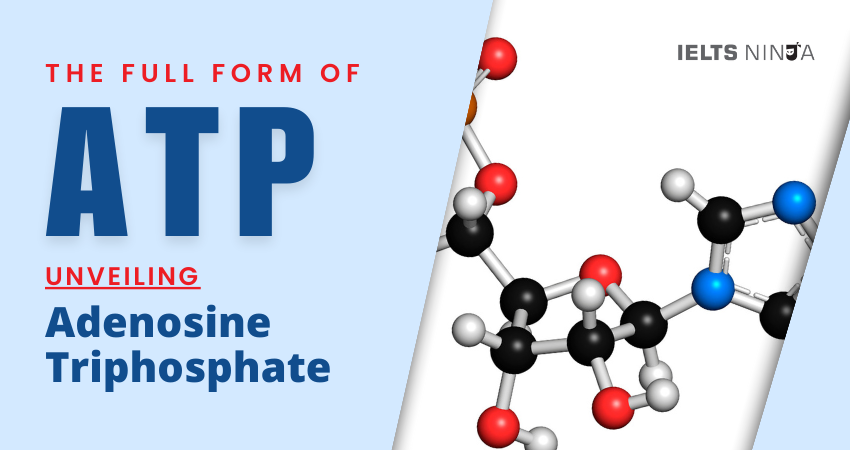In the realm of biochemistry and cellular biology, the full form of “ATP” stands for “Adenosine Triphosphate.” ATP is often referred to as the “molecular currency” of energy in living organisms. It plays a central role in energy transfer within cells and is vital for various biological processes. In this comprehensive guide, we will explore the details of ATP, its structure, functions, and its significance in the world of biology.
What is ATP?
Adenosine Triphosphate (ATP) is a molecule found in all living cells, from the simplest bacteria to complex multicellular organisms. It is often described as the “energy currency” of cells because it stores and transfers energy needed for various cellular activities.
Key Aspects of ATP
Structure of ATP:
ATP consists of three main components:
- Adenine: A nitrogen-containing base, which is one of the four bases found in DNA and RNA.
- Ribose: A five-carbon sugar molecule.
- Triphosphate Group: Three phosphate groups attached to the ribose molecule.
The high-energy phosphate bonds in ATP are crucial for its role as an energy carrier.
Energy Storage and Transfer – ATP:
ATP stores energy in the form of chemical potential energy within its phosphate bonds. When cells require energy for various processes, ATP can be hydrolyzed, meaning it loses one or two phosphate groups, releasing energy in the process. This energy release powers numerous cellular activities.
Functions of ATP:
ATP is involved in various cellular processes, including:
- Cellular Respiration: ATP is generated during cellular respiration, a metabolic process that converts nutrients (such as glucose) into energy.
- Active Transport: It powers the movement of ions and molecules across cell membranes against their concentration gradients.
- Muscle Contraction: ATP provides the energy needed for muscle fibers to contract.
- DNA Replication and Repair: ATP is required for DNA-related processes, including replication and repair.
- Enzyme Activation: Many enzymatic reactions in cells are driven by ATP.
- Cell Signaling: ATP is involved in cell signaling pathways.
Recycling of ATP:
ATP is not a one-time-use molecule. It can be regenerated through processes like cellular respiration, where it is synthesized from ADP (Adenosine Diphosphate) and inorganic phosphate (Pi) using the energy obtained from nutrients.
Importance of ATP:
ATP is often regarded as one of the most important molecules in biology because it is the primary means by which cells store and utilize energy. Without ATP, the majority of cellular processes that require energy would not be possible.
Also Read: Best online IELTS coaching & training academy
Significance of ATP
The significance of ATP in biology can be summarized as follows:
Energy Currency:
ATP is the universal energy currency of cells, facilitating energy transfer and utilization for various vital processes.
Metabolism:
It is a key player in metabolic pathways, including glycolysis, the citric acid cycle, and oxidative phosphorylation.
Cellular Work:
ATP powers cellular work, allowing cells to perform tasks like transporting molecules, maintaining ion gradients, and building macromolecules.
Life Sustenance:
ATP is essential for sustaining life, from the simplest single-celled organisms to complex multicellular organisms like humans.
Conclusion
Adenosine Triphosphate (ATP) is a fundamental molecule in the world of biology, serving as the primary energy currency of living cells. Its structure, energy storage, and transfer capabilities are central to numerous cellular processes, ensuring the survival and functioning of all living organisms. Understanding ATP is crucial for comprehending the bioenergetics of life.








